Should You Choose A Kikuyu Or Buffalo Lawn?
Finding a lawn that can thrive in the harsh, yet diverse Australian climate, can be confusing. Depending on your climate and soil type, certain grasses may be better suited ...

For a homeowner wanting a lawn that requires less mowing, is water-wise and hard wearing and has an eye-catching dark green colour – A Zoysia turf is your answer. Zoysia varieties such as Empire®Zoysia & Nara Native®Zoysia have gained popularity throughout the warmer climates of Australia due to their low maintenance, water-efficient nature and eye-catching dark green colour.
We have put together this guide to cover everything you need to know when choosing a Zoysia variety for your lawn.
This popular grass has a deep-rooted, underground runner system that allows Zoysia turf to endure extreme climates such as heat, humidity and sub-zero temperatures.
Since Zoysia turf breeds can survive on little rainfall, they are an ideal choice for regions with water restrictions.
 While being a hardy lawn, Zoysia grass also has a fine to medium leaf which is soft underfoot.
While being a hardy lawn, Zoysia grass also has a fine to medium leaf which is soft underfoot.
Compared to Couch and Kikuyu varieties, Zoysia grass also has a reputation for strengthening soil profiles and improving erosion control.
The Zoysia lawn has also proven itself to be extremely popular to homeowners who want a good-looking, low maintenance grass that requires less mowing, weeding and fertiliser compared to Kikuyu, Couch or Buffalo lawns.
One of the stand-out features of Zoysia grass is its low maintenance.
Mowing frequency is well below that of other lawn varieties and depends on how long you want your Zoysia grass to grow.
If you want a slow-growing Zoysia grass, then minimal or no fertiliser is recommended.
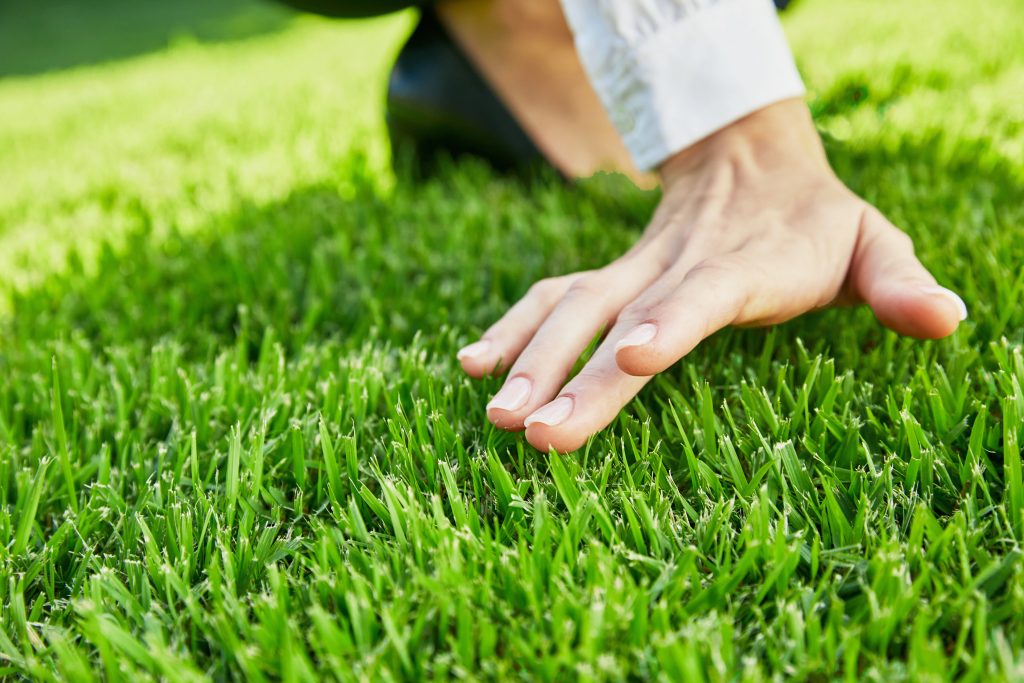
Zoysia grass is more drought-tolerant and water-efficient than Couch, Kikuyu and Buffalo varieties.
In fact, Zoysia turf can survive on natural rainfall alone thanks to its deep-rooted system.
Zoysia turf has excellent fast initial growth that spreads across the ground with highly branching runners that provide excellent wear recovery.
Zoysia turf has good to moderate shade tolerance, up to 50%, which is higher than both Couch and Kikuyu varieties.
Zoysia grasses have naturally adapted to saline conditions making them ideal for coastal homes or alongside salt swimming pools.
While Zoysia grasses are a tough, hardy lawn they also have an attractive, good-lasting bright green colour that is maintained year-round.
Zoysia lawns are an outstanding choice for erosion prevention and control with many proving themselves to effectively strengthen the soil’s structure making them ideal for steep embankments.
Zoysia grasses are warm-season grasses native to China, Japan and other parts of southeast Asia.
There are three sub-species that make up the Zoysia family they are:
Below are explanations for each sub-genus of the Zoysia family
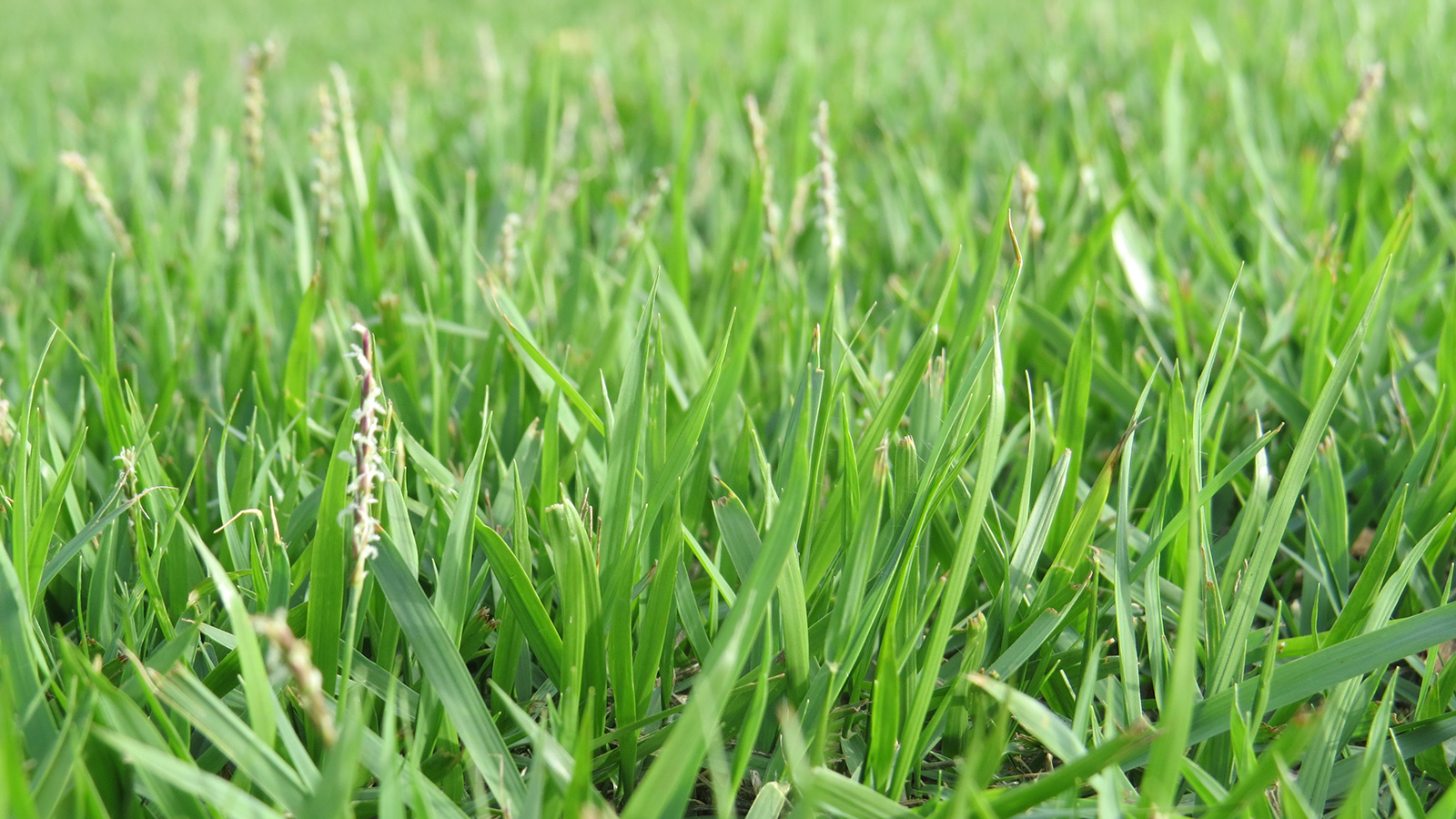
Zoysia macrantha, also known as the prickly couch, is the only Zoysia grass currently considered a native and is predominantly found naturally along the east coast of Australia, making it perfect for the tough Aussie climate.
Zoysia macrantha is a creeping perennial plant that can handle hot, dry climates as well as the humidity and the cold and inland salt marsh habitats.
Zoysia macrantha generally has a fine to medium leaf tip with a typical leaf size ranging between 4mm -7mm and is light green in colour
The Zoysia macrantha grasses spread vigorously by stolons, occasionally by rhizomes, once established and grow in low elevation preferring sandy soils where other grasses establish poorly.
The wear and shade tolerance of Zoysia macranthas are inferior to the other types of Zoysia grasses.
One of the most popular and well-known Zoysia macrantha’s available on the market is myhomeTURF’s Nara™ Native Zoysia.
Zoysia macrantha’s are very popular home lawns as well as suit the grass specifications for council and government projects.
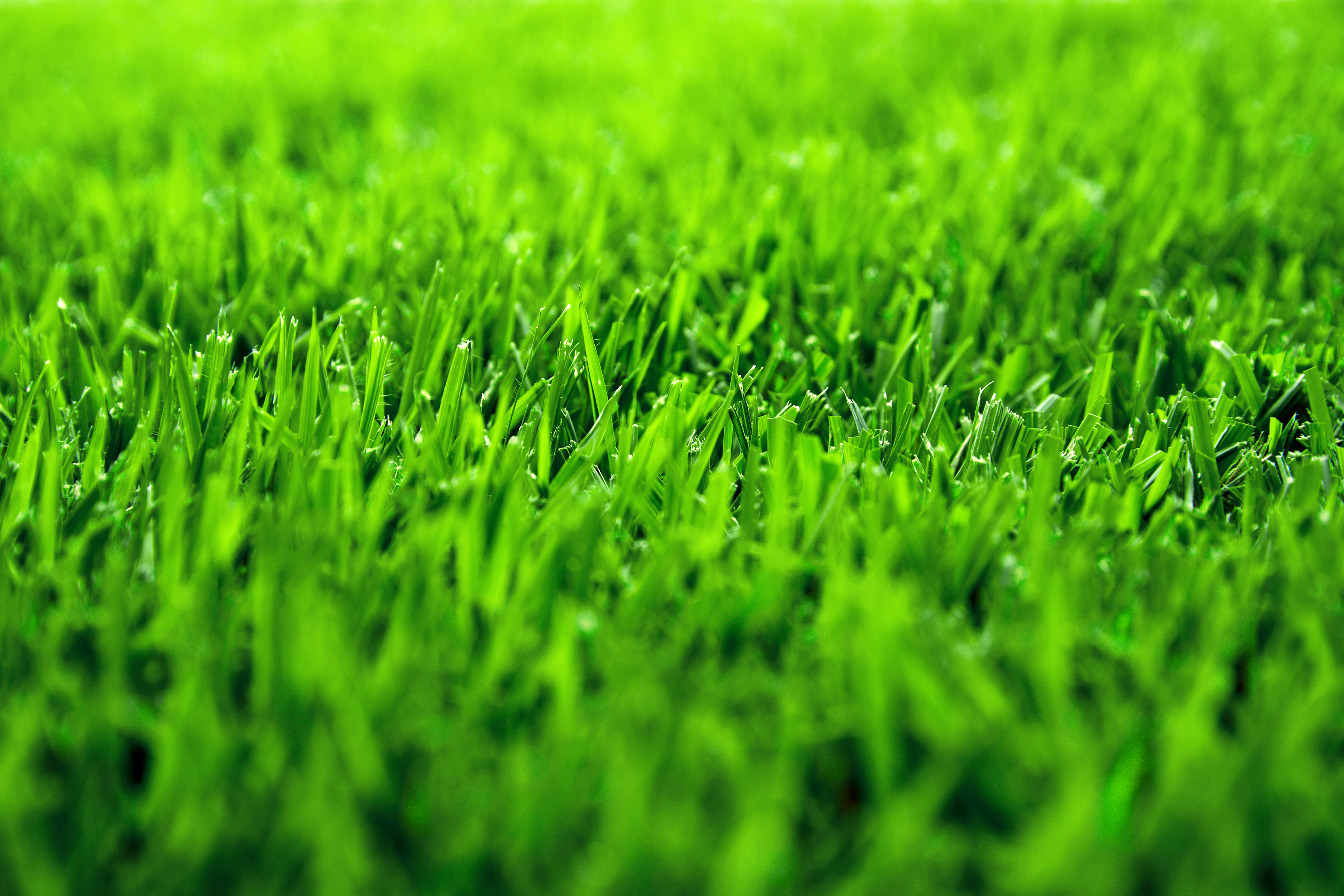
Zoysia japonica is a creeping, short perennial grass that grows by both rhizomes and stolons and is native to the coastal grasslands of southeast Asia and Indonesia.
Today, Zoysia japonica has become one of the most widely used grass species due to its low maintenance, hardwearing and high drought tolerance.
Zoysia japonica generally has a fine to medium leaf tip with a typical leaf size ranging between 4mm -7mm but are noted for their eye-catching dark green colour.
One of the most popular and well-known Zoysia japonica’s available on the market is myhomeTURF’s Empire™ Zoysia.
Zoysia japonica are very popular home lawns as well as suit the grass specifications for council and government projects.
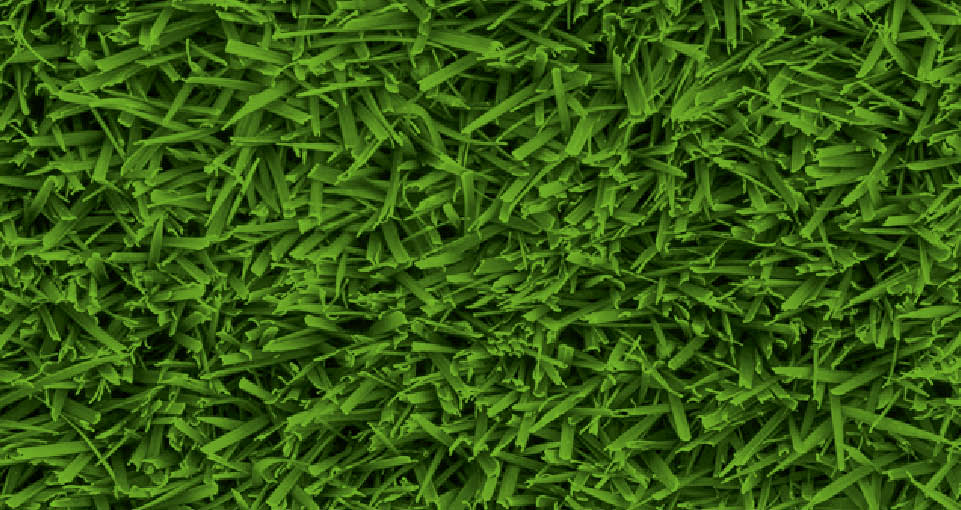
Zoysia matrella is a mat-forming, perennial grass native to temperate coastal southeastern Asia and northern Australia.
Zoysia matrella has a vigorous root, stolon and rhizome system which allows the grass to handle full sun, have a high shade tolerance and cope with lots of wear and tear.
When growing within yards or parklands around trees, Zoysia matrella has the unique habit of growing entirely under the trees canopy and up to the trunk.
Zoysia matrella is easily identified from its fine leaf tip with a typical leaf size that is no more than 4mm.
One of the most popular and well-known Zoysia matrella’s available on the market is myhomeTURF’s Augusta™ Zoysia.
Zoysia matrella are very popular home lawns as well as suit the grass specifications for council and government projects and golf courses.
myhomeTURF has two of the most popular Zoysia grasses on the market – both are ideally suited to the harsh Australian conditions but also maintain an attractive green colour.
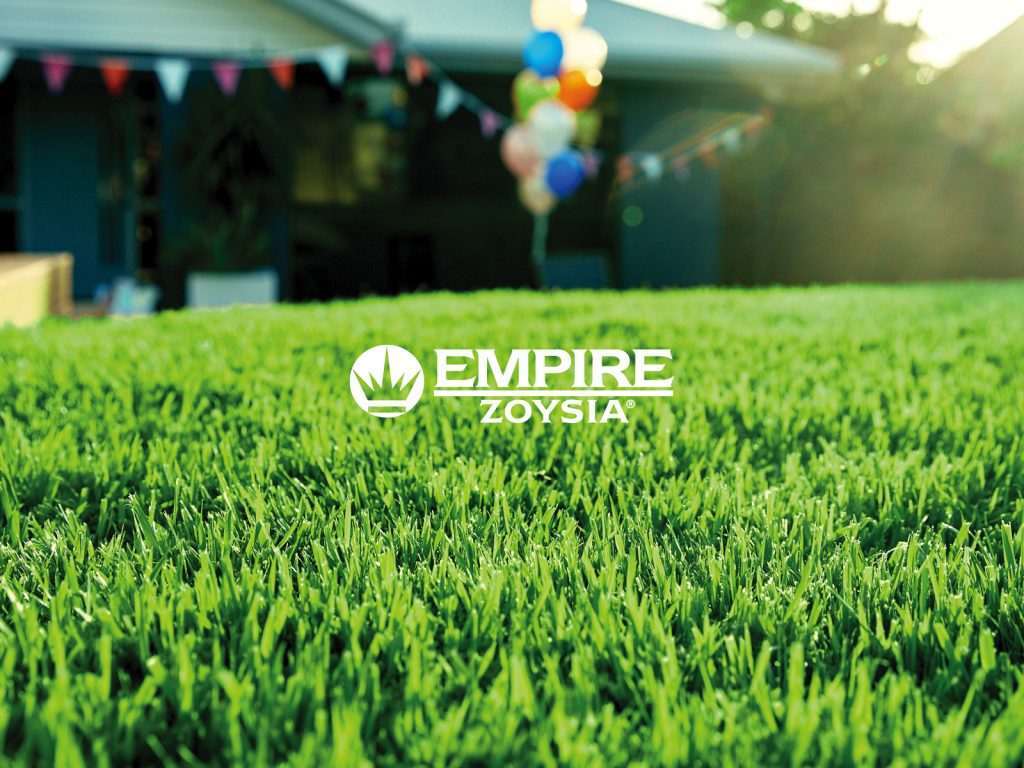 Empire®Zoysia – Stunning to look at, easy to keep. Empire Zoysia is a stalwart turf variety that outperforms other popular grasses providing good wear recovery and requiring less water and lower maintenance.
Empire®Zoysia – Stunning to look at, easy to keep. Empire Zoysia is a stalwart turf variety that outperforms other popular grasses providing good wear recovery and requiring less water and lower maintenance.
When compared to Kikuyu, Couch and Buffalo, Empire Zoysia requires less mowing, fertiliser, pesticides and dethatching. Empire Zoysia is also recognised for its eye-catching dark green colour and fine, tight leaf blades that are soft underfoot.
Empire Zoysia also meets the Erosion Control Australian Standard No#AS5181:2017 Use and installation of turf as an erosion, nutrient and sediment control measure.
Where it grows: Empire Zoysia grows well in Queensland, New South Wales, ACT, Victoria, South Australia, Western Australia and the Northern Territory. Your local Empire Grower suppliers can easily be found with our online supplier locator tool.
Expect to pay: Between $12 and $16 per square metre. To get more Empire Zoysia pricing info, visit our Empire Zoysia info page and get 3 quotes from your local Empire growers today.
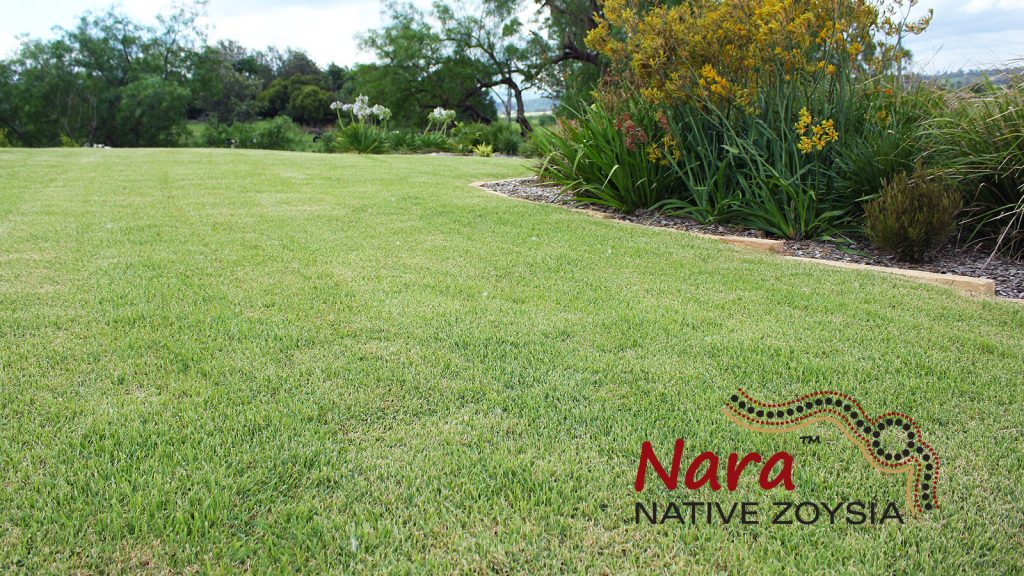
Nara Native®Zoysia – Australian born and bred. Nara Native Zoysia is fast becoming Australia’s Number One native environmentally friendly choice thanks to its integration into the natural landscape.
Nara Native Zoysia has the added benefits of low maintenance, strong weed and pest resistance, outstanding drought, salt and wear tolerance as well as maintaining a strong winter colour.
Nara Native Zoysia also meets the Erosion Control Australian Standard No#As5181:2017 Use and installation of turf as an erosion, nutrient and sediment control measure.
Where it grows: Nara Native Zoysia grows well in Queensland, New South Wales, ACT, Victoria, South Australia, Western Australia and the Northern Territory. Your local Nara Grower suppliers can easily be found with our online supplier locator tool.
Expect to pay: Between $11 and $16 per square metre. To get more Nara Zoysia pricing info, visit our Nara Zoysia info page and get 3 quotes from your local growers today.
Augusta Zoysia lawn has just arrived and has quickly become one of the most premium adaptable solid performing lawns on the market offering exceptional drought and shade tolerance.
This user-friendly, deep green coloured Augusta grass creates a compact smart-looking lawn that suits any environment – from residential, parklands and sporting fields.
Augusta is also recognised for its high shade tolerance and is ideal for those wanting a low maintenance lawn that requires less mowing, fertilising and watering.
Where it grows: Augusta Zoysia can be delivered to Brisbane, Gold Coast, South East Queensland and Sydney. To obtain a quote from our suppliers can easily be found with our online supplier locator tool.
Expect to pay: Augusta Zoysia is a premium lawn, retailing between $22 and $26 per square metre. To get more Augusta Zoysia pricing info, visit our Augusta Zoysia info page and get 3 quotes from your local growers today.
myhomeTURF’s Certificate of Authenticity provides you with the confidence and satisfaction that you have bought the genuine variety from our licenced farmers. Don’t forget to ask for your own certificate when you have purchased your new law – and enjoy!
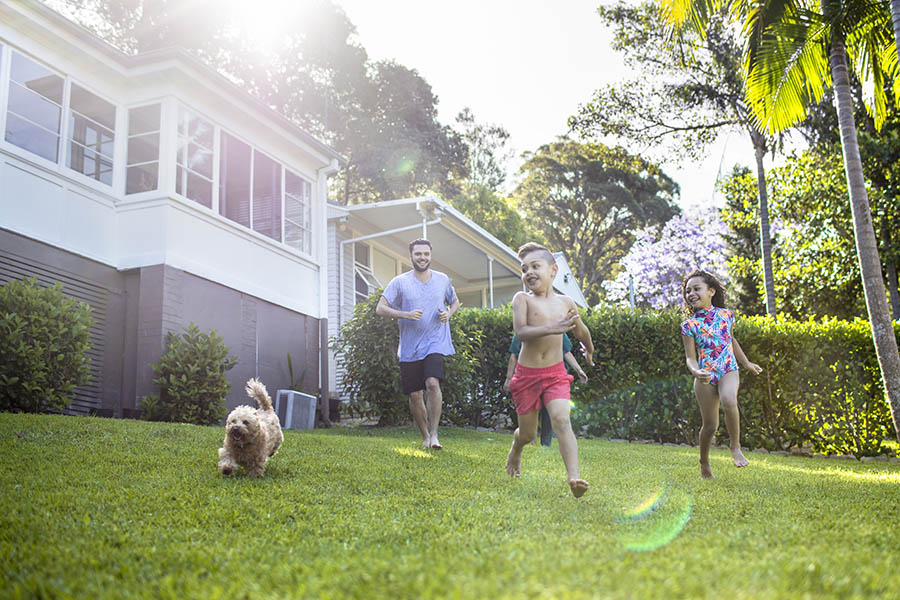 Zoysia grasses are renowned for tolerating considerable variations in exposure to sunlight, water, and temperature.
Zoysia grasses are renowned for tolerating considerable variations in exposure to sunlight, water, and temperature.
Zoysia grasses also make for a durable lawn as they are generally resistant to weeds, insects, and diseases that can harm other types of grass.
In addition, Zoysias typically don’t require much fertiliser and are one of the best grasses in terms of tolerating periods of long dry thanks to an efficient underground root system that stores water. Even with their relative low-maintenance, it’s still important that you implement a lawn care routine for your Zoysia lawn to ensure it stays in top condition year-round.
A lawn care & maintenance routine for your Zoysia lawn should include:
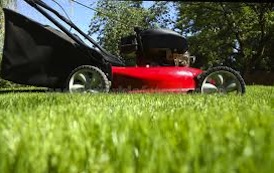
Zoysia grasses are best known for being able to be mowed long or short depending on the desired finish.
As a general rule, mow your Zoysia turf every 7 – 21 days during spring and summer depending on the frequency of fertiliser application.
During autumn and winter, mow your Zoysia lawn every 3 – 4 weeks.
Always ensure you mow your Zoysia grass to a height that does not cause scalping, such as 35mm -45mm.
Zoysia grasses also require less edging around gardens compare to Couch, Kikuyu and Buffalo lawns.
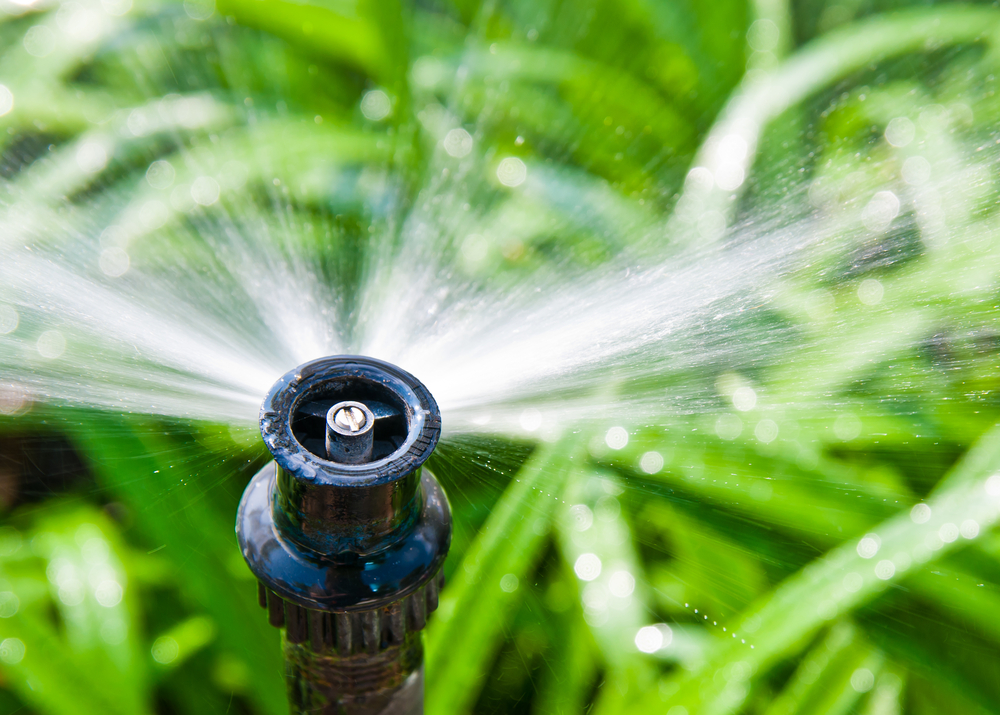
1. Watering a new Zoysia lawn
Newly installed Zoysia grass requires watering for establishment.
Apply at least 2cm to 3cm to newly laid Zoysia grass, ensuring you water deep enough to soak the soil to between 7cm to 10cm.
If you want to learn more about watering, make sure to read out guide to watering a new lawn.
2. Watering an Established Zoysia Lawn
Established Zoysia grass can maintain itself on little to no water – making it an ideal choice for low rainfall areas or regions prone to drought.
However, if you would like to maintain lush, green lawn water thoroughly when the Zoysia lawn’s leaf blades begin to slightly wilt – this is usually every 7-10 days in summer and much less in cooler months.
Following an extended dry spell, Zoysia grass recovers much more quickly than all other turf varieties.
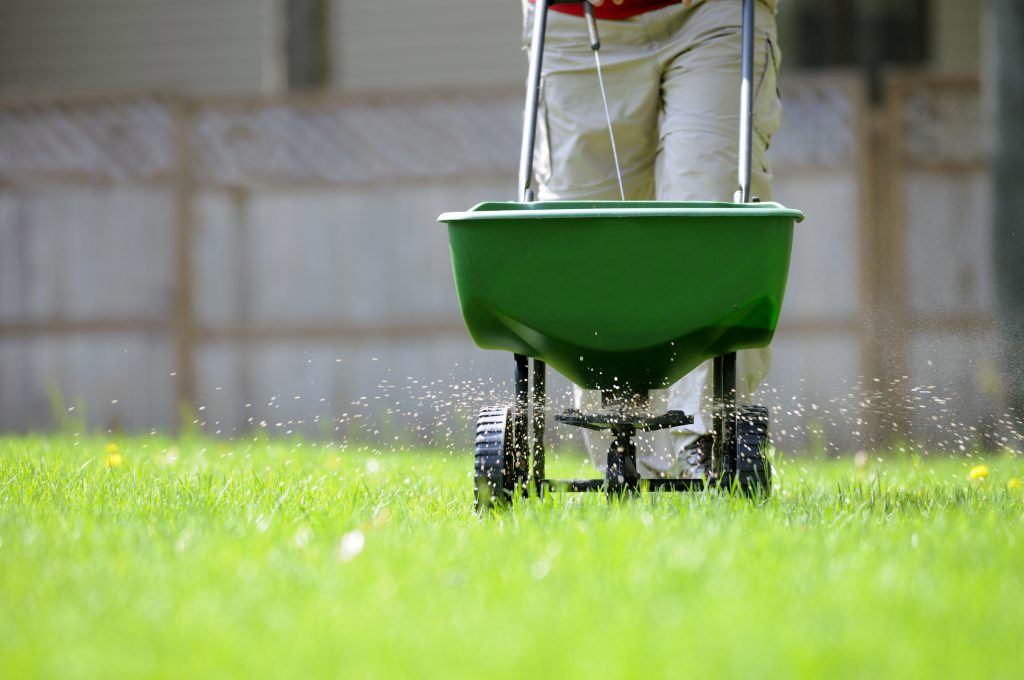
Zoysia lawns require minimal fertiliser to maintain acceptable healthy grass.
If your Zoysia lawn will receive moderate wear, you want it to maintain good winter colour and have low to moderate mowing; fertilise at the beginning of April and mid-June with a slow-release fertiliser.
If your Zoysia lawn will get high wear, you want it to remain dark green year-round and you don’t mind regular mowing; fertilise in autumn and winter as well as September and October with a moderate rate or slow-release fertiliser.
For homeowners who want a low maintenance Zoysia lawn that they mow 2 to 4 times a year, then do not fertilise at all.
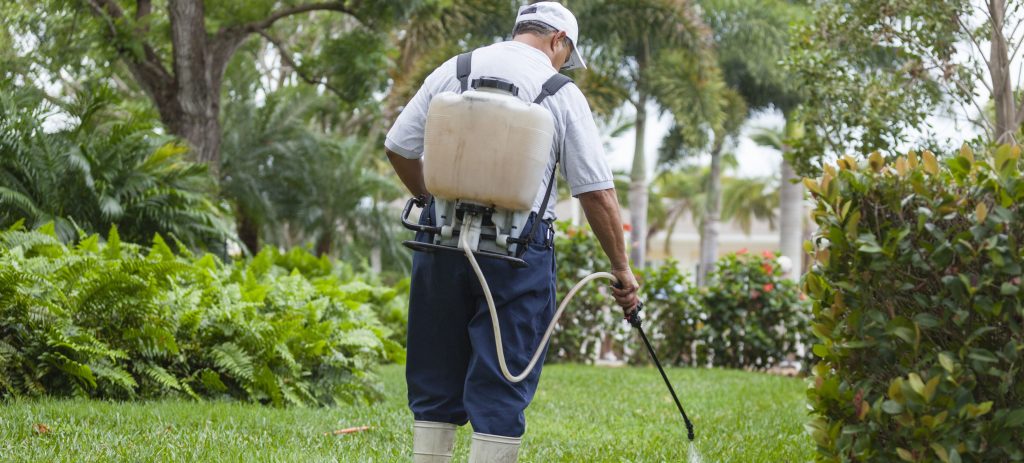
Weeds can take any form and can vary depending on where they grow and typically produce large numbers of seeds, assisting their spread.
Unfortunately, weeds are often excellent at surviving and reproducing and are commonly the first plants to colonise and dominate.
Control of weeds in Zoysia grass is much easier than in Kikuyu, Buffalo and even Couch due to its healthy dense structure.
If a few weeds invade your lawn, then hand weed, and if they become a greater issue ask your Local Garden Centre for advice as to which herbicide to use.
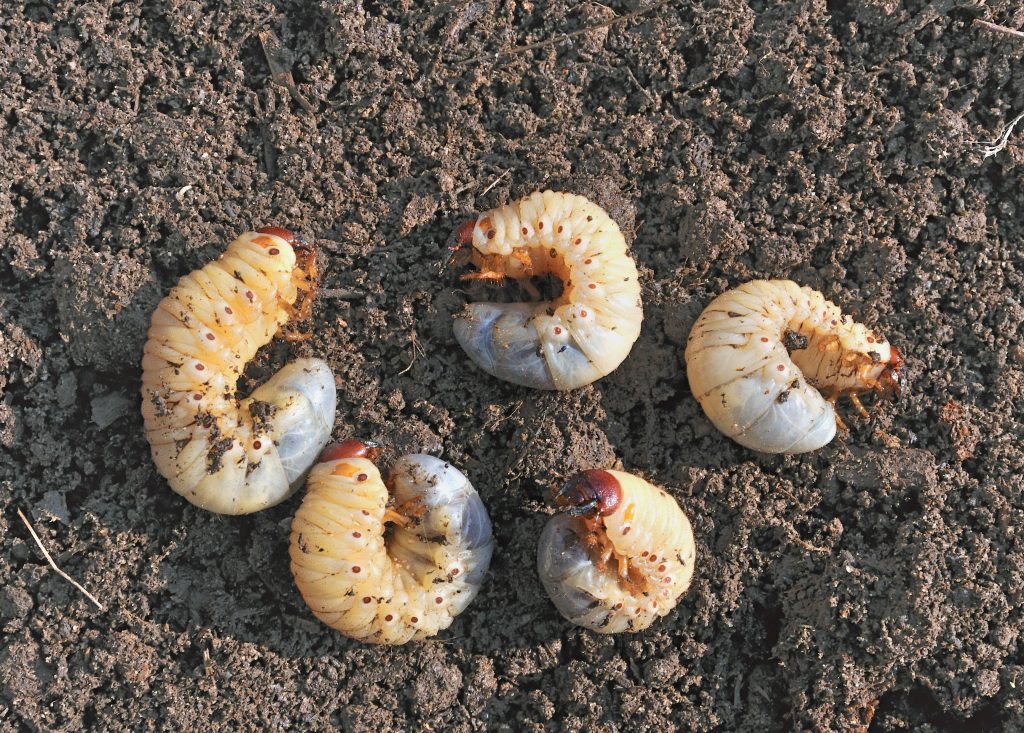
Lawn pests can be numerous and varied. For example, underground, your grass could become a meal for White Curl Grubs and Mole Crickets.
Other lawn insects, including Armyworms and Two Spotted Mites, could attack the stalks of your Zoysia grass.
Zoysia grass is far less susceptible to Lawn Grub than Buffalo, Couch and Kikuyu lawns.
Occasionally you may see caterpillars, or if you are in Queensland the occasional Mealy Bug, if this occurs consult your Local Garden Centre for advice as to which pesticide suits your Zoysia grass variety.
Most Zoysia grasses are relatively resistant to diseases.
The most common disease problems in Zoysia grasses are Brown Patch, Leaf Spot and Rust.
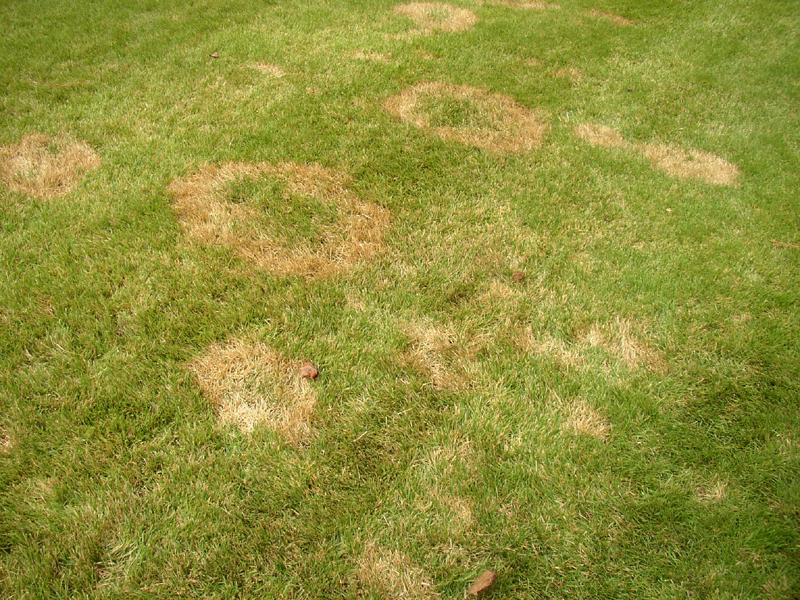
Brown spot causes patches of Zoysia grass to dye off, these dead patches start small but can quickly spread during warm conditions.
Brown Patch is clearly identified in Zoysia grass due to its distinct brown ring that encircles a green centre.
Keeping your Zoysia grass healthy helps prevent Brown Patch from occurring, however there are fungicides available – seek advice from your Local Garden Centre first.
What causes brown spots in zoysia grass? Leaf spot is a Zoysia disease that occurs during warm days and cool nights and forms brown spots on your lawn. Usually leaf spot is caused from overly dry conditions and lack of proper fertiliser.
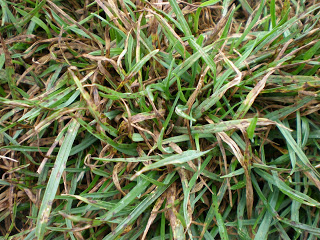
Leaf spot on Zoysia grass can occur during warm days, cool nights and lack of proper fertiliser.
Leaf Spot causes small lesions on the Zoysia grass’ blades with distinct patterns which under close inspection could look spotty.
To alleviate Leaf Spot on Zoysia grass apply fertiliser and water deeply once a week.
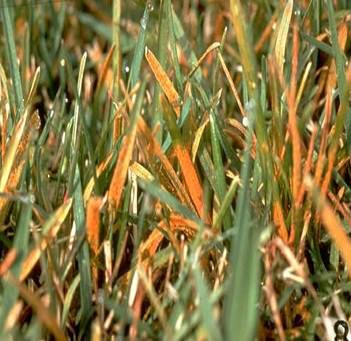
Rust is a fungal disease that occurs on your lawn when it’s growth is slowed.
Rust usually appears in late summer or early autumn and during periods of dry weather or when the grass is low on nitrogen.
Lawn rust in Zoysia grass often develops during cool, moist conditions and looks like an orange, powdery-like substance.
The most effective control method for Rust on Zoysia grass is to use an appropriate fungicide.
To prevent Rust from spreading over your Zoysia lawn retrieve all grass clippings after mowing.
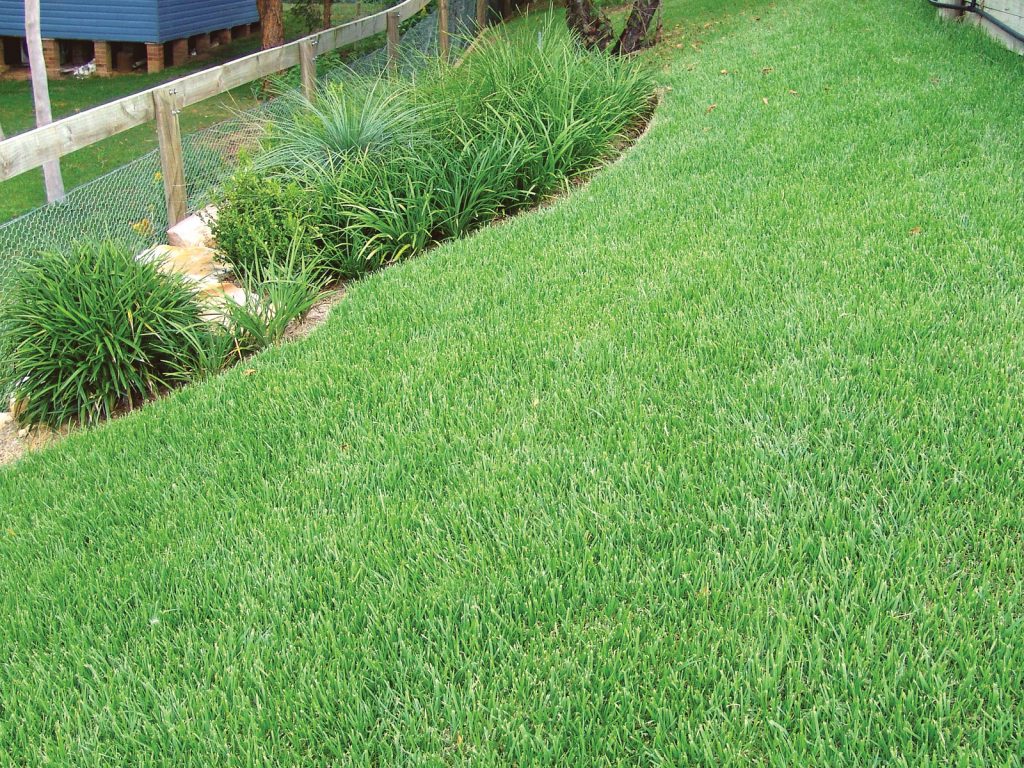 The best planting time for all Zoysia grasses is when the weather is not too cold, but it can be laid anytime in both Queensland and New South Wales.
The best planting time for all Zoysia grasses is when the weather is not too cold, but it can be laid anytime in both Queensland and New South Wales.
When planted in warmer weather Zoysia turf will establish relatively quickly.
Zoysia grasses may take a week longer to establish than other varieties of lawn if planted in early spring or autumn, but they are much less work!